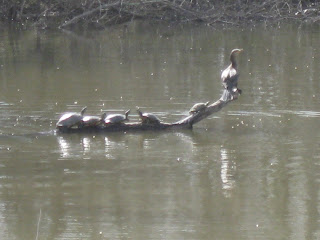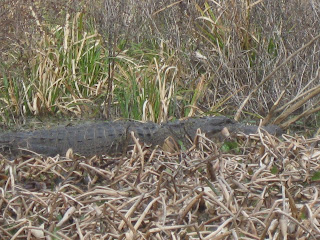We drove 260 miles to Mustang Island State Park, just outside Corpus Christi TX.

Our campground is full! 28 degree weather expected, no sewer, and it is full! The gulf is a ¼ mile away. We took numerous walks on the often deserted beach.
(The wind was cold.)


We did encounter some wildlife and other flying objects.

Ray found a catfish...

which a gull quickly claimed as its own.

We enjoyed watching the plovers along the shore

and other creatures of the air.
We drove into Corpus Christi to see the USS Lexington, the aircraft carrier that was reported sunk 4 times in WWII--wishful thinking on Japan's part.

Ray sat on the bridge and saw views of the deck and Corpus Christi beyond.



Our next excursion was to South Padre Island National Seashore and the nearby pier.

We returned to that area when we learned that 270 sea turtles who had washed ashore due to cold weather were scheduled for release back into the water.



The next day we drove to Port Aransas along the beach (the sand is quited packed).

We visited the jetty area (note the dolphin just below the boat)

and watched the birds, there on the gulf side and also on the bay.

A variety of shorebirds

A pelican with a fish.

A roseated spoonbill.
Our last day in the Corpus area was Valentines Day. In celebration we went out for a lobster and scallop dinner at Port Royal resort.

It was delicious.





















































